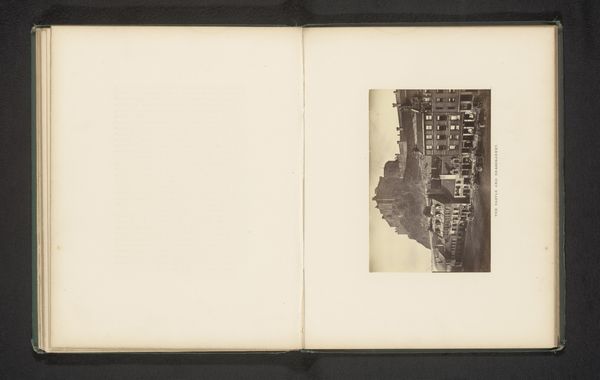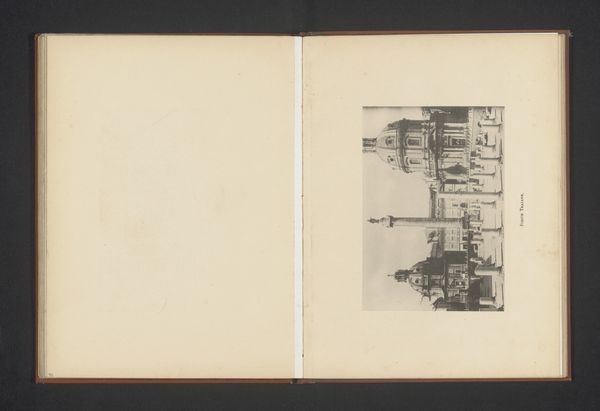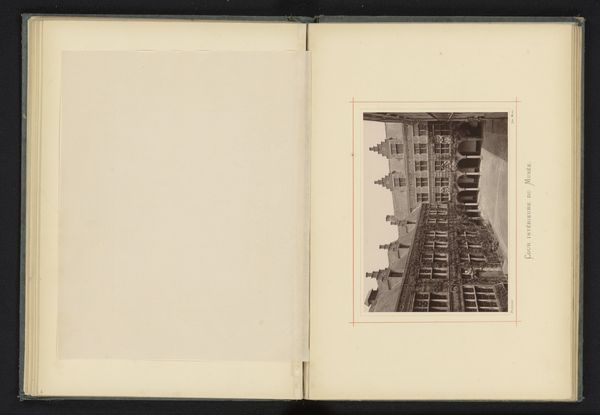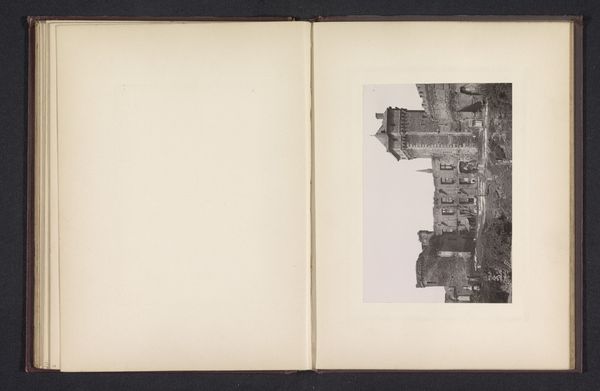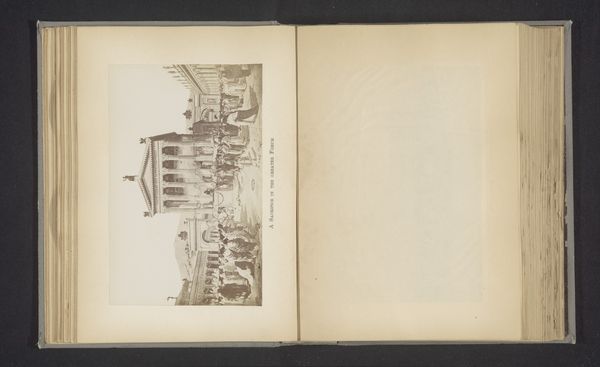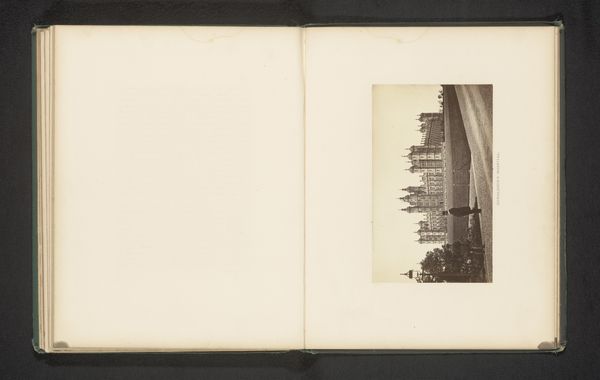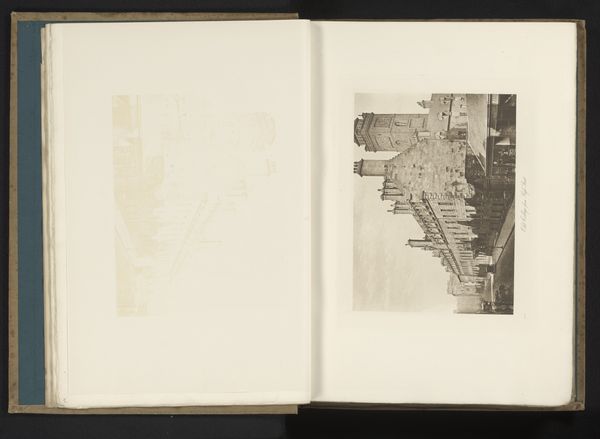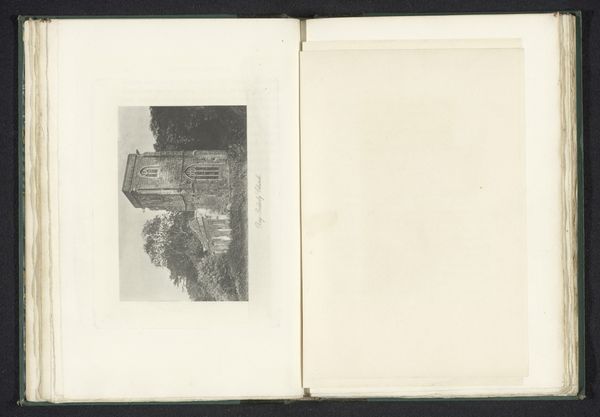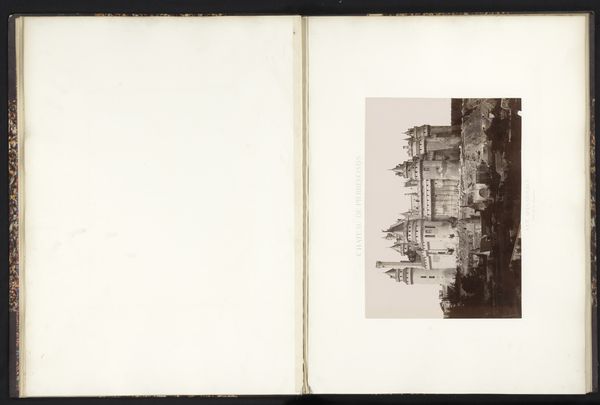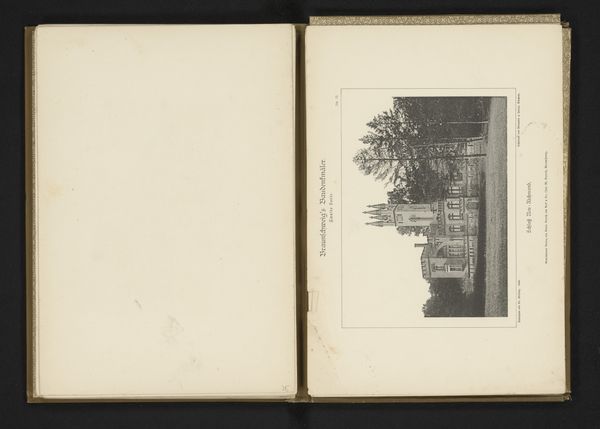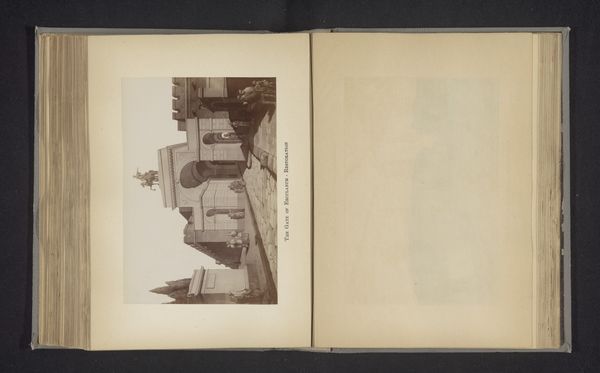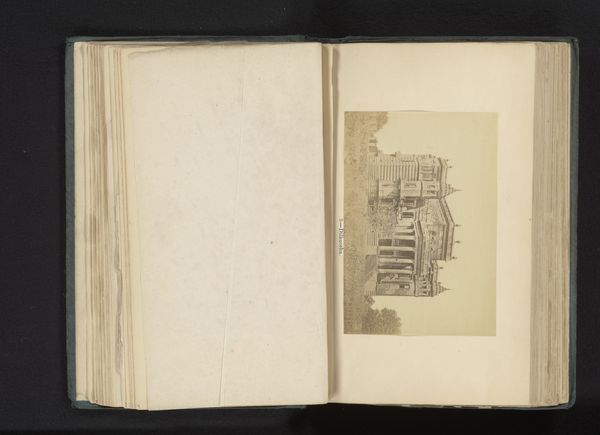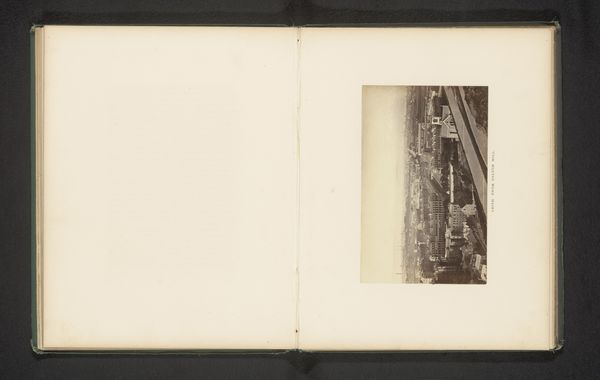
photography, gelatin-silver-print
#
photography
#
gelatin-silver-print
#
cityscape
#
realism
Dimensions: height 154 mm, width 102 mm
Copyright: Rijks Museum: Open Domain
Curator: This is Archibald Burns's "Gezicht op The West Bow," a gelatin-silver print dating from about 1862 to 1867. Editor: Okay, my first thought? The textures! It’s got this amazing crumbling quality that just pulls you in. Like an old story whispering its secrets. And something about it makes me feel really…small. Curator: Indeed. Consider the historical context. This work offers a glimpse into 19th-century urban life, revealing the realities of a rapidly changing society. We are presented with a particular view of Scotland—one captured through the lens of realism, while also acknowledging the area’s economic stratification and architectural heritage. Editor: Right, it’s not some idyllic pastoral scene. You feel the grit, don't you? The way the light falls almost feels like it’s revealing layers, not just of brick and stone, but of lives lived, industries humming, a whole social system pressing down. Did people even smile for these pictures back then? Curator: Photography was in its relative infancy, so that probably added to the solemnity. Now the West Bow area of Edinburgh, where Burns positioned his camera, possessed a significant history. It was a densely populated part of the Old Town, home to merchants, artisans, and laborers alike. Consider how these structures facilitated that stratification, which is a critical lens in examining power dynamics. Editor: It’s incredible to think this almost ghostly street was teeming with life. But now I’m also stuck on that stark light. It almost feels theatrical. It casts those long shadows that, to me, speak to something deeper. Curator: Shadows are always suggestive, as are their inevitable counterparts: illumination. I suggest viewers might reflect on who—or what activities—remain in the shadows versus those which occupy the foreground. It begs us to reflect upon visibility, social inequity, and how time obscures certain narratives, while reinforcing others. Editor: It gives me chills, almost! Makes you think about what survives, what's remembered. Art as a sort of…spectral archive. Curator: Yes, by preserving a specific image of that street, Archibald Burns implicitly chose which elements were important enough to freeze. Let this remind you of photography’s undeniable—and often underacknowledged—power in dictating societal memory and visibility. Editor: Wow. Suddenly this simple photo feels incredibly complex! A single click, but so much contained within. Curator: Exactly! Next time, observe closely.
Comments
No comments
Be the first to comment and join the conversation on the ultimate creative platform.
